I want to fill a bunch of polygons with line hatch. The lines must have a specific angle with respect to x-axis. I found that matplotlib already suppots some hatch classes and one can define a custom class (like How to fill a polygon with a custom hatch in matplotlib?). I tried to generate a custom hatch but when I append it to the list of hatches the init function doesn't know the angle. I tried with the following class:
class AngularHatch(HatchPatternBase):
def __init__(self, hatch, density, angle):
self.num_lines = int((hatch.count('{'))*density*3)
self.num_vertices = self.num_lines * 2
self.R = np.array([[np.cos(angle), -np.sin(angle)],
[np.sin(angle), np.cos(angle)]])
def set_vertices_and_codes(self, vertices, codes):
steps, stepsize = np.linspace(0.0, 1.0, self.num_lines, False,
retstep=True)
steps += stepsize / 2.
vertices[0::2, 0] = 0
vertices[0::2, 1] = steps
vertices[1::2, 0] = 1
vertices[1::2, 1] = steps
for i, v in enumerate(vertices):
vertices[i] = self.R.dot(v)
codes[0::2] = Path.MOVETO
codes[1::2] = Path.LINETO
Then I add this class to the list of available classes for hatching. However this will not generate the correct lines since the code is modified from the HorizontalHatch source code here and I think this generates lines in the unit square. Moreover I need to generate this patch for a specific angle for each polygon I want to render. ¿Any ideas on how to give the correct angle to this class per polygon?
